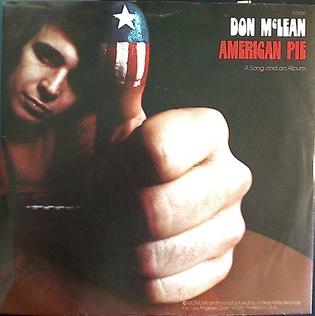Thirty unconventional, unusual or atypical love songs to soundtrack this holiday
Follow Tunes Du Jour on Facebook
Follow me on Bluesky
Follow me on Instagram
The music of 1969 captures a unique crossroads in cultural history—a year teetering between optimism and cynicism, unity and rebellion. Looking at a playlist from this year reveals a blend of genres and voices, each reflecting a society in flux. The playlist’s tracks encompass themes of love, social change, disillusionment, and raw individualism, echoing the era’s contradictions and bold spirit.
On one end of the spectrum, songs like Elvis Presley’s “Suspicious Minds” and Tammy Wynette’s “Stand By Your Man” echo traditional themes of love, loyalty, and heartbreak, though with a hint of modern skepticism. Presley’s soulful performance marked his return to chart-topping success, while Wynette’s hit became a polarizing anthem, embraced by some for its devotion and questioned by others for its apparent passivity. Meanwhile, Glen Campbell’s “Wichita Lineman” captured a more introspective side of the decade, blending pop and country into a haunting portrayal of loneliness and perseverance.
But 1969 wasn’t all about introspection; it was also a year of unrestrained expression and pushing boundaries. Creedence Clearwater Revival’s “Bad Moon Rising” hinted at a sense of looming danger, with its ominous lyrics striking a nerve during a time of political upheaval. In contrast, “Honky Tonk Women” by The Rolling Stones embraced the gritty allure of rock and roll without aiming for a larger societal message. Jagger’s tales of chance encounters and gin-soaked nights represent the Stones’ unapologetic celebration of indulgence, sidestepping introspection in favor of pure hedonism.
Amidst the wild spirit of rock, 1969 also offered more uplifting messages with a hint of idealism. Sly & The Family Stone’s “Everyday People” and The Youngbloods’ “Get Together” conveyed calls for unity that resonated deeply in an era fraught with political and racial tensions. Sly Stone’s anthem became a rallying cry for acceptance, emphasizing individuality while embracing common ground. Similarly, “Aquarius/Let the Sunshine In” by The 5th Dimension captured the essence of the countercultural movement in all its utopian ambitions, even if the optimism was a bit idealistic in hindsight.
Then there was the music that addressed disillusionment head-on, perhaps best captured by Simon & Garfunkel’s “The Boxer” and Peggy Lee’s “Is That All There Is?” Both songs offer reflective, sometimes jaded perspectives on life’s struggles and the disappointments that can accompany maturity. Where “The Boxer” tells the story of a young man grappling with hardship and loss, Lee’s dry wit in “Is That All There Is?” confronts the emptiness that can lie beneath life’s surface pleasures.
Ultimately, this playlist from 1969 feels like a time capsule of an era balancing between hope and disillusionment. From the raw proto-punk of The Stooges to the tender balladry of Stevie Wonder’s “My Cherie Amour,” the year’s music speaks to a generation grappling with unprecedented social changes. Through these songs, 1969 continues to resonate, reminding us that music often reflects the spirit of its time while challenging listeners to consider where they stand.
Follow Tunes Du Jour on Facebook
Follow Tunes Du Jour on Twitter
Follow me on Instagram
Melanie Safka wrote the song “Lay Down” after performing at Woodstock in 1969, where she was inspired by the sight of the audience lighting candles in the rain. It became her first US hit, peaking at number 6 on the Billboard Hot 100.
Melanie was born on this date in 1947. She passed away just over a week ago. A few of her songs are on today’s playlist.
Follow Tunes du Jour on Facebook
Follow Tunes du Jour on Twitter
Follow me on Instagram
Randy Newman was born on this date in 1943. Lots of songs from him on today’s playlist.
https://open.spotify.com/embed/playlist/2U2ab5KT0a5uNLFha5cWSU?utm_source=generator
Follow Tunes du Jour on Facebook
Follow Tunes du Jour on Twitter
Follow me on Instagram

This Throwback Thursday we revisit 1972. What happened in music in 1972?:
Michael Jackson had the first of 13 solo US #1 Hot 100 singles with a song
about a rat.
Chuck Berry had his first US #1 single with a song about his penis.
Roberta Flack spent six weeks at #1 on the US Hot 100 with a song she
released in 1969.
Helen Reddy rerecorded a song from her 1971 album I Don’t Know How To Love Him. It became the first of her three US #1 Hot 100 singles and became an anthem for women’s equality.
The Staple Singers scored their first of two US #1 Hot 100 hits with a classic song that had only one verse.
Neil Young scored his only US #1 Hot 100 single.
Some of the other classic singles to peak in 1972 are “American Pie,” “Let’s Stay Together,” “Me & Mrs. Jones,” “Without You,” “If You Don’t Know Me By Now,” “Alone Again (Naturally),” “Lean On Me,” “Papa Was a Rollin’ Stone,” “School’s Out” and “The Harder They Come.”
David Bowie released The Rise and Fall of Ziggy Stardust and the Spiders
from Mars.
The Rolling Stones released Exile on Main St.
Elton John released Honky Château.
As far as music goes, I’d say 1972 was pretty pretty pretty pretty good. Even the bad songs were good! Here are thirty highlights.
Follow Tunes du Jour on Facebook.
Follow Tunes du Jour on Twitter.
Follow me on Instagram.